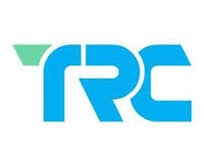India’s retail lending landscape is experiencing significant growth, paving the way for numerous employment opportunities. The retail lending segment, encompassing personal loans, home loans, credit cards, and microfinancing, has become a critical driver of economic development. According to a report by TeamLease Services, the growth in this sector is fueled by increased financial literacy, digital banking advancements, and supportive government policies. In FY22, banks in India channeled approximately INR 34 trillion into retail loans, marking a robust 12% increase from the previous year. This surge is not only driving economic expansion but also advancing nationwide financial inclusion. The expansion is particularly pronounced in Tier 2 and Tier 3 cities, which are witnessing significant job growth and transforming the employment landscape beyond major urban centers.
1. Rising Demand for Financial Services
– The increasing demand for financial products such as personal loans, home loans, and microfinancing in Tier 2 and Tier 3 cities is driving employment growth. As more individuals seek access to credit and banking services, financial institutions are expanding their presence and hiring more personnel to cater to these needs.
2. Enhanced Financial Inclusion Initiatives
– Government and private sector initiatives aimed at promoting financial inclusion are contributing to the growth of the retail lending sector in smaller cities. Programs targeting rural and semi-urban populations have increased the need for banking professionals who can deliver these services, leading to higher employment rates.
3. Expansion of Microfinance
– Non-banking financial companies (NBFCs) hold a substantial market share in the microfinance sector, focusing on marginalized populations. This expansion requires a robust workforce to manage credit disbursement, debt recovery, and customer service, creating numerous job opportunities in Tier 2 and Tier 3 cities.
4. Technological Advancements and Digital Banking
– The adoption of digital banking and technological innovations has made financial services more accessible in smaller cities. Financial institutions are hiring tech-savvy professionals to manage digital platforms, cybersecurity, and data analytics, further boosting employment in these regions.
5. Economic Development and Consumer Growth
– The economic development in Tier 2 and Tier 3 cities has led to increased consumer spending and financial activities. As local economies grow, so does the need for a larger workforce to support the expanding retail lending operations, from front-line sales to back-office functions.
Conclusion
The growth of the retail lending sector in Tier 2 and Tier 3 cities presents a remarkable opportunity for employment and economic development. By investing in financial literacy, digital banking skills, and vocational training, India can ensure a skilled workforce to support this burgeoning sector. Aspiring professionals in these cities have a unique chance to build rewarding careers, contribute to their communities, and drive national progress through financial empowerment.
 Newspatrolling.com News cum Content Syndication Portal Online
Newspatrolling.com News cum Content Syndication Portal Online







